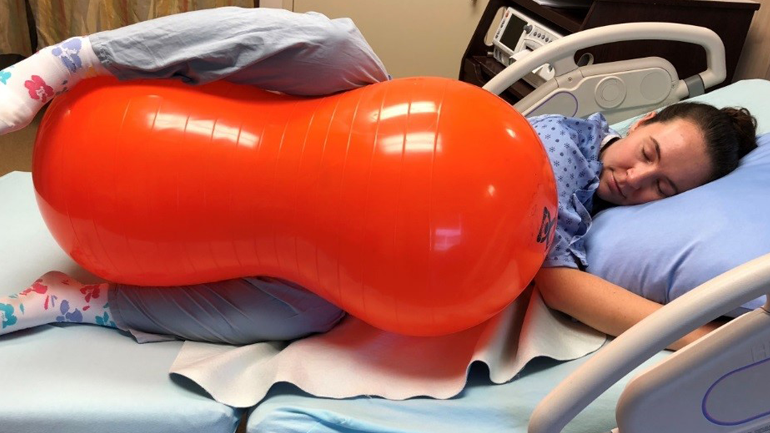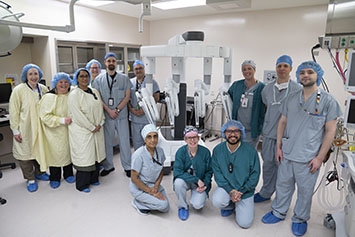
August 28, 2019
The Peanut Ball is a peanut shaped birthing ball used in labour to facilitate fetal rotation, flexion, and descent by encouraging mobilization and optimal positioning, especially for women with an epidural.
Evidence shows that Peanut Balls can:
- Improve patient satisfaction with the non-invasive, non-pharmacological intervention.
- Reduce the length of labour in 1st stage for first time mothers with an epidural by 29 min and the pushing stage by 11 min.
- Decrease the number of C-Sections (less than half as likely to have a CS using Peanut ball).
- One small study found a reduction in the number “stalls” in labour.
In the Fraser Health Nursing Study -90% of patients expressed satisfaction using the Peanut Ball.
Women’s own words about their experience using the Peanut Ball:
- “Helped my baby engage in pelvis and sped up labour.”
- “It was effective in ripening cervix and allowing my baby to descend.”
- “It was helpful. Helped me with stable leg position.”
- “Made it progress but it’s not the most comfortable to use.”
- “My legs felt weak and the extra support also helped keep my legs apart for my pelvis to keep stretching.”
- “I didn’t like it but I think it helped open my pelvis.”
Nurses perception of its effectiveness:
- “Shortened labour and helped prevent some CS or assisted deliveries.”
- “Was instrumental for achieving a vaginal birth, despite the fact that some patients found it uncomfortable.”
- “Baby presented OT (occiput transverse) at 8cm, used the peanut ball, and progressed to 10cm and OA (Occiput Anterior) in less than 30 min with a vaginal delivery.”
- “With epidural, peanut ball assisted to rotate baby from OP to OA with vaginal birth.”
- “Patient satisfaction was huge, Peanut Ball with epidural- amazing! Amazing how quick babe can turn to an anterior position using the Peanut ball.”
Peanut Balls are available for use on all Fraser Health Maternity units and are a safe, cost effective tool that nurses can use to help patients achieve their childbirth goals by possibly shortening labour and optimizing vaginal birth.
Text Size


